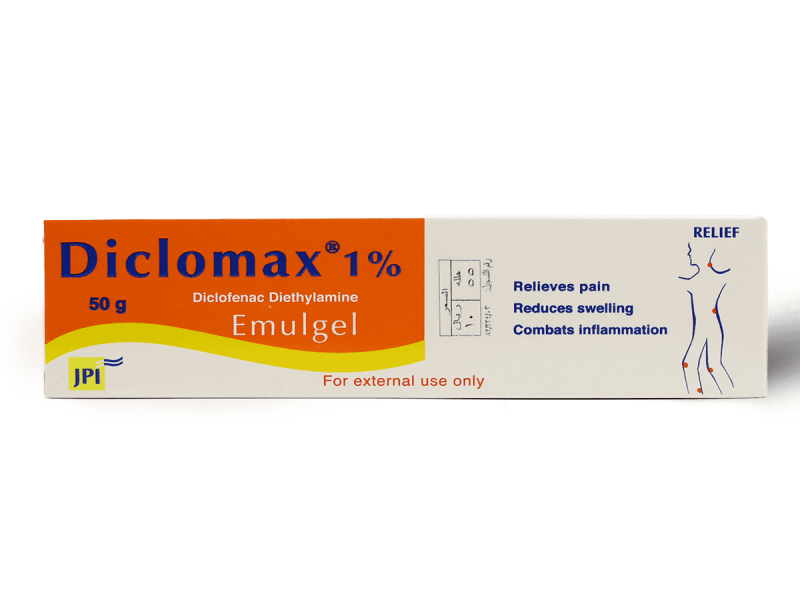
- diclofenac which belongs to a group of medicines called non-steroidal anti-inflammatory drugs (NSAIDs) which works by:
- Inhibiting cyclooxygenase (COX)-1 and COX-2, thereby inhibiting prostaglandin synthesis
- May also inhibit neutrophil aggregation/activation, inhibit chemotaxis, decrease proinflammatory cytokine level, and alter lymphocyte activity
Therapeutic Indications Of Diclomax Emulgel
- muscle and joint injuries (e.g. sprains, strains, bruises, backache, sports injuries)
- tendonitis: Tendonitis is when a tendon swells (becomes inflamed) after a tendon injury. It can cause joint pain, stiffness, and affect how a tendon moves. (e.g. tennis elbow)
- osteoarthritis is a disease characterized by degeneration of cartilage and its underlying bone within a joint as well as bony overgrowth. The joints most commonly affected are the knees, hips, and those in the hands
Method Of Administration Of Diclomax Emulgel
- Gently squeeze out a small amount of gel from the tube and apply to the painful or swollen area, slowly rubbing into the skin.
- The amount needed will vary depending upon the size of the painful or swollen area.
- You may notice a slight cooling effect when you rub the gel in.
- Only use the smallest amount of this medicine needed to relieve your pain.
- Apply the gel 2 times a day (preferably morning and evening) on the painful area.
- Do not apply to cuts or open skin.
- Do not use it for more than 2 weeks without consulting your doctor.
- Doses may be changed in special conditions so always follow your doctor's or pharmacist's instructions.
- If you take more than you should, talk to a doctor or go to the hospital straight away.
- If you forget to take a dose, take it as soon as you remember it unless it is nearly time for your next dose.
- Do not take a double dose (two doses at the same time) to make up for the forgotten dose.






